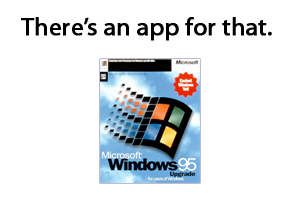 Run for the hills! That’s the message iPhone owners are receiving after multiple reports say security researchers will tomorrow unveil an iPhone vulnerability that could allow the popular device to be taken over via simple SMS (or text) message.
Run for the hills! That’s the message iPhone owners are receiving after multiple reports say security researchers will tomorrow unveil an iPhone vulnerability that could allow the popular device to be taken over via simple SMS (or text) message.
The bug, discovered by iPhone hacker Charlie Miller, will be outlined during a presentation at the Black Hat security conference in Las Vegas on Thursday. Miller’s presentation will supposedly show, as Forbes’ headline screams, “How To Hijack ‘Every iPhone In The World’”. To do so, attackers only need to send a series of specially-formatted SMS messages to an iPhone in order to take over functions such as dialing and turning on the camera and microphone, as well spreading the attack via an affected iPhone’s contact list.
Apple, which Miller notified about the bug six weeks ago, has not commented on the vulnerability and as of this writing has not released a patch for the problem. What can iPhone owners do in the meantime? Miller tells Forbes about the only thing that will surely protect the device is to turn it off.
Miller’s talk isn’t the only centered around SMS vulnerabilities. Other talks will show a somewhat similar flaw in Windows Mobile that would allow for complete control of a device to be achieved through a SMS hack. A third Black Hat talk will center around how an SMS flaw that affects both iPhone and Google Android devices could be used to knock impacted phones off a carrier network for upwards of ten seconds via a blast of SMS messages.
Should you be scared of these newest flaws and really turn off your iPhone in anticipation of an attack? I don’t think so. The SMS attack vector is not all that new. This past spring, CSO Online did a video demonstration of such an attack against various smart phones (see parts one and two of the video).
While the various Black Hat presentations this week will show SMS as being a newer vector for attacking popular smartphone platforms, the odds are still relatively low that any one device will be hit. Most likely (or hopefully), device makers like Apple and carriers will come up with a patch for the SMS flaws well before any mainstream attacks occur. You have a greater chance of being bitten by a Twitter-based hack than an SMS attack.

 It looks like The Pirate Bay will likely not be sold after all, as it appears the site it was sold to will not be able to raise the necessary capital to complete the transaction, TorrentFreak
It looks like The Pirate Bay will likely not be sold after all, as it appears the site it was sold to will not be able to raise the necessary capital to complete the transaction, TorrentFreak  It won’t be a truly done deal until it gets regulatory approval, but Microsoft and Yahoo have finally agreed to a partnership which, among other things, will
It won’t be a truly done deal until it gets regulatory approval, but Microsoft and Yahoo have finally agreed to a partnership which, among other things, will 
 Sharpcast is serious about putting its SugarSync file-syncing-to-the-cloud service on devices of all sorts. It’s already available on Windows, OS X, iPhone OS, BlackBerry, and Windows Mobile–
Sharpcast is serious about putting its SugarSync file-syncing-to-the-cloud service on devices of all sorts. It’s already available on Windows, OS X, iPhone OS, BlackBerry, and Windows Mobile–

 In the same way that Booyah Society is rooting for me, I’m really hoping the new iPhone app can do better than it has.
In the same way that Booyah Society is rooting for me, I’m really hoping the new iPhone app can do better than it has.

 I continue to think of my iPhone not as a phone but as a personal computer. Which is why I continue to be so nonplussed about Apple’s
I continue to think of my iPhone not as a phone but as a personal computer. Which is why I continue to be so nonplussed about Apple’s  Contrary to current received wisdom, Twitter doesn’t change everything. At least it appears not to have changed the
Contrary to current received wisdom, Twitter doesn’t change everything. At least it appears not to have changed the